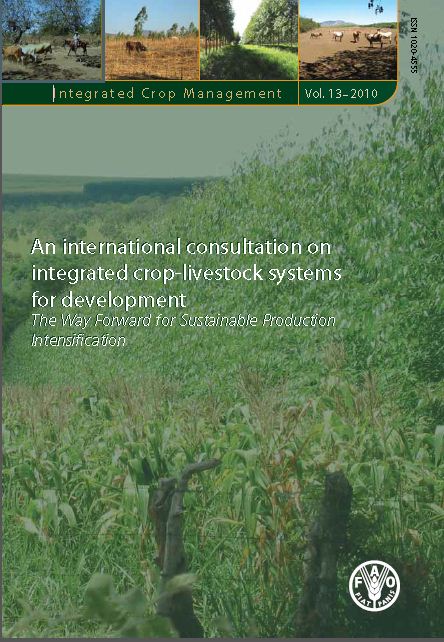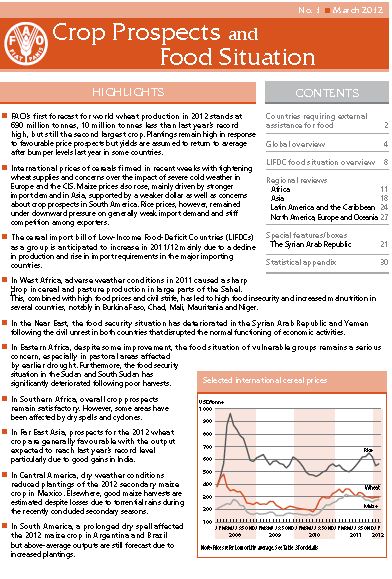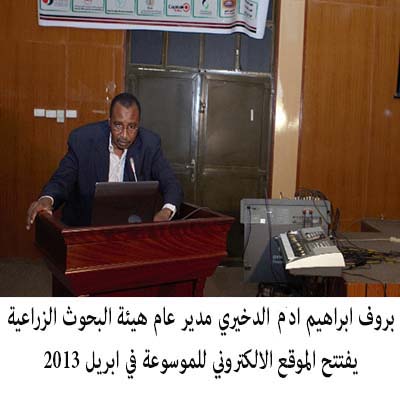انتاج المحاصيل
An international consultaiton on
integrated crop-livestock systems
for development
The Way Forward for Sustainable Production
intensification

Effect of irrigation water quantity and tillage treatment on forage
sorghum [Sorghum bicolor (L). Moench] cultivar Abu Sabein in saltaffected
soil of Sudan.
Salah Abdel Rahman Salih1, Abdel Moneim Elamin Mohamed2 and Mohamed
Abdel Mahmoud Elsheikh3
Abstract: This study was conducted during 2009 and 2010 summer seasons at the Demonstration Farm of the Faculty of Agricultural Technology and Fish Science, University of Neelain (Jebal Awlia area) south of Khartoum to investigate the most suitable irrigation water quantity and the best tillage treatment for growing [Sorghum bicolor (L). Moench] cultivar Abu Sabein in salt affected soil.The irrigation water quantities used were crop water requirement (CWR) + 10% or 20% of the crop water requirement as a leaching fraction (LF). Three tillage treatments namely, disc plow, chisel plow, disc harrow were used and zero tillage as a control. The variables compared were plant height, number of leaves/plant, ,stem diameter, leaves/stem ratio, fresh and dry weight and water use efficiency. The soil of the site was found to be non saline, non sodic but calcareous soil with pH ranged from 7.5 to 8.0, SAR, from 1.7 to 10.0, ECe, from 0.6 to 3.0 ds/m,CaCO3, from 1.6 to 3.8. Average bulk density value obtained was 1.28 g/cm3 ,average field capacity value obtained was 22.8% on dry weight basis, soil texture of the all depths is sandy clay loam. The results showed that CWR + 20% LF gave higher results than CWR + 10% LF, also chisel plow gave higher values than the other tillage treatments for all the variables during the two seasons
الاستفياء Stevia
تنتمي نبته الاستفياء إلى عائلة عباد الشمس Star ceae وينضوي تحت جنسها حوالي 240 نوعاً من العشبيات والشجيرات التي تستوطن المناطق المدارية وشبه المدارية  الممتدة من شمال غرب أمريكا وحتى أمريكا الجنوبية. وتستزرع الأستقياء على نطاق واسع خاصة النوع stevia rebandiana من أجل أوراثها ذات المذاق الحلو. ولهذا السبب يطلق عليها عموماً اسم الورقة الحلوه، أو ورق السكر او باسمها المجرد استفياء. وتتميز الاستفياء كمادة تحلية وبديلة للسكر بمذاق بطيء الأثر في مستهل تناولها ولكنه بعد ذلك يبقى أثره لمدة أطول مقارنة بالسكر بالرغم أن للتركيزات العالية لبعض مستخلصاته طعم لازع أو شبيه بطعم العرقسوس.
الممتدة من شمال غرب أمريكا وحتى أمريكا الجنوبية. وتستزرع الأستقياء على نطاق واسع خاصة النوع stevia rebandiana من أجل أوراثها ذات المذاق الحلو. ولهذا السبب يطلق عليها عموماً اسم الورقة الحلوه، أو ورق السكر او باسمها المجرد استفياء. وتتميز الاستفياء كمادة تحلية وبديلة للسكر بمذاق بطيء الأثر في مستهل تناولها ولكنه بعد ذلك يبقى أثره لمدة أطول مقارنة بالسكر بالرغم أن للتركيزات العالية لبعض مستخلصاته طعم لازع أو شبيه بطعم العرقسوس.
كما تتميز بمستخلصاته من جليكوسيد الاستيفيول Steviol glyoscial والتي تفوق درجة حلاوتها ودرجة حلاوة السكربثلاثمائة مرة مما جذب إليها الانتباه لمقابلة الطلب المتزايد على بدائل غذائية ذات مستوى منخفض من النشويات والسكريات حيث أن تأثير الاستيفياء على الجلكوز في الدم منعدم او لا يذكر مما وسع من جاذبيتها كعامل تحلية طبيعي وسط الذين يتبعون نظم حمية غذائية منخفضة النشويات.
يتفاوت تواجد نبات الاستفياء ويتنوع من بلد إلى آخر. فبينما بعض الأقطار عرفت الاستفياء كمادة للتحلية منذ عقود طويلة أو قرون كما هو الحال في اليابان، فهي في البعض الآخر توجد في أضيق الحدود بسبب الحظر والمنع الذي فرضته عليها تلك البلاد جراء أسباب صحية وسياسية كما هو الحال في الولايات المتحدة التي عادت في عام 2008 وسمحت باستخدام مستخلصات الريبوديوسيد (أ) (Reboaudiesele. A) كمادة مضافة للأغذية. ولكن وبمرور السنوات يشهد العالم تزايد عدد الأقطار التي تستخدم فيها الاستفياء لأغراض التحلية.



